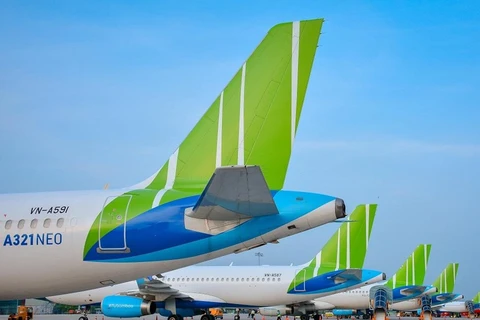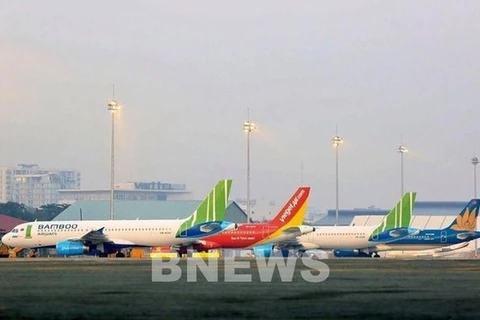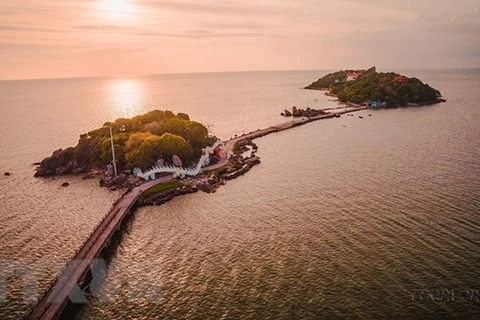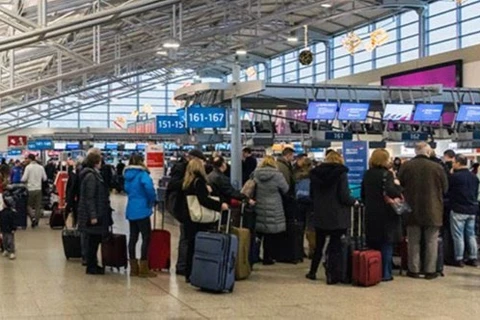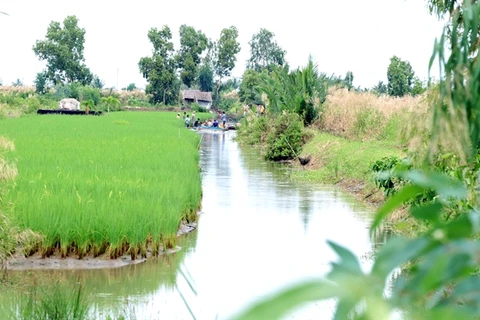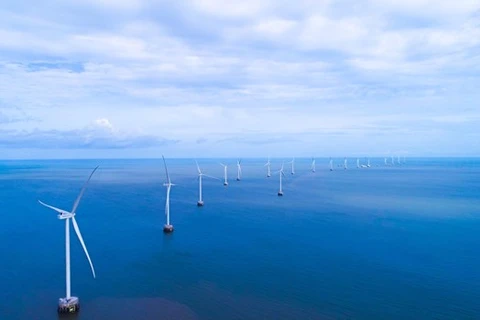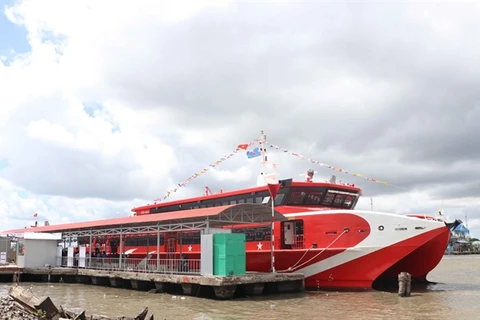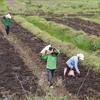 Bamboo Airways will launch Hanoi-Ca Mau direct flights from April 29 this year. ( Photo: Courtesy of Bamboo Airways)
Bamboo Airways will launch Hanoi-Ca Mau direct flights from April 29 this year. ( Photo: Courtesy of Bamboo Airways) Hanoi (VNA) – Bamboo Airways on March 17 started selling tickets for its direct flights from the capital city of Hanoi to the southernmost province of Ca Mau and vice versa with prices from 769,000 VND (32.6 USD) per ticket.
The airline will operate three return flights on the route per week on Tuesdays, Thursdays, and Saturdays from April 29, 2023. It takes just more than two hours to travel from Hanoi to Ca Mau province by 98-seat Embraer E190 aircraft.
Nguyen Ngoc Trong, Chairman of the Board of Directors of Bamboo Airways, said Ca Mau Airport will be the last destination to complete Bamboo Airways’ domestic flight network connecting all of the nation’s 22 airports.
According to the airline's survey, the Hanoi - Ca Mau route is one of the longest road trips in the country, with a distance of more than 1,900 km. Previously, passengers had to travel for days by road and waterway, or by connecting flights.
Specifically, if traveling by car, it takes passengers from 32 to 37 hours, and they may have to use a ferry. By train, passengers will have to transfer to stations because there is currently no direct railway connecting Hanoi and Ca Mau.
Meanwhile, currently, to reach the southernmost province, air passengers choose to take a Hanoi - Ho Chi Minh City flight or Ha Noi - Can Tho one, then take a connecting flight or go by road to Ca Mau, spending up to 3.5 - 6 hours, not including transit time.
According to the provincial authority, the Ca Mau Airport now operates two flights to Ho Chi Minh City. Its throughput is 35,000-40,000 passengers per year, far below its full capacity of 200,000 each year. The airport plans to increase its capacity to 40 million passengers in 2025-2035.
The Ca Mau Airport was built under French colonial rule with a runway of 1,500 metres long and 30 meters wide, capable of receiving only small aircraft such as the Embraer E190.
Ca Mau province is home to diverse fauna, especially birds, which makes it an attractive eco-tourism destination for domestic and international travelers. Surrounded by sea on three sides, the coastal province is also home to numerous national historical and cultural relics, while the combination of ethnic cultures creates abundant festivals and cultural features such as floating markets and regattas./.
